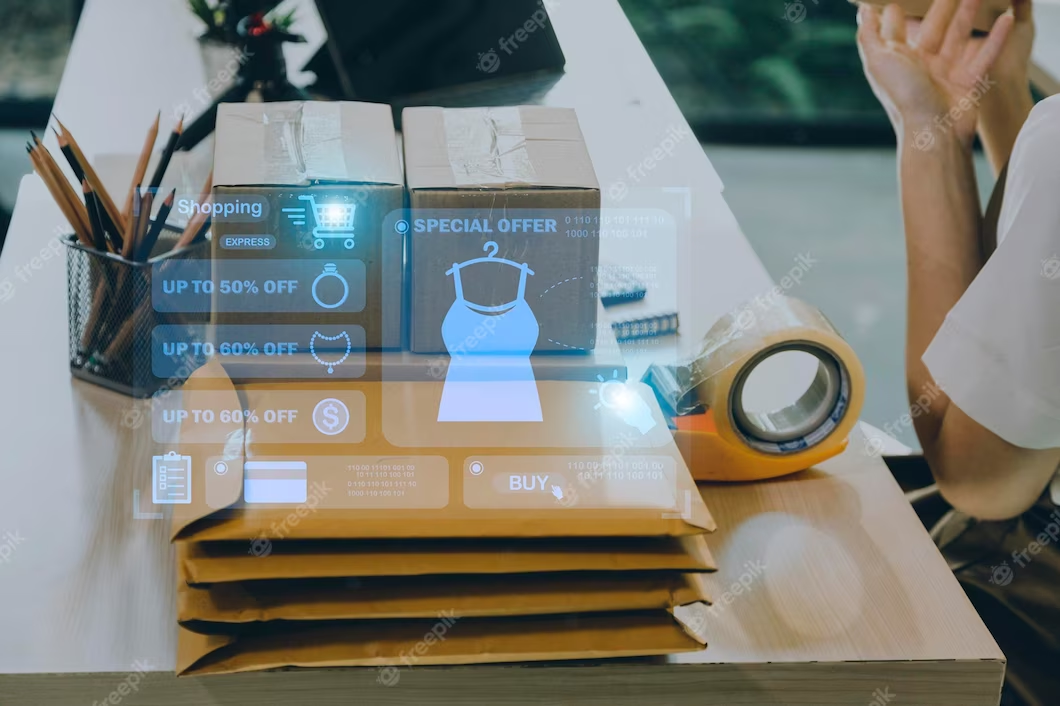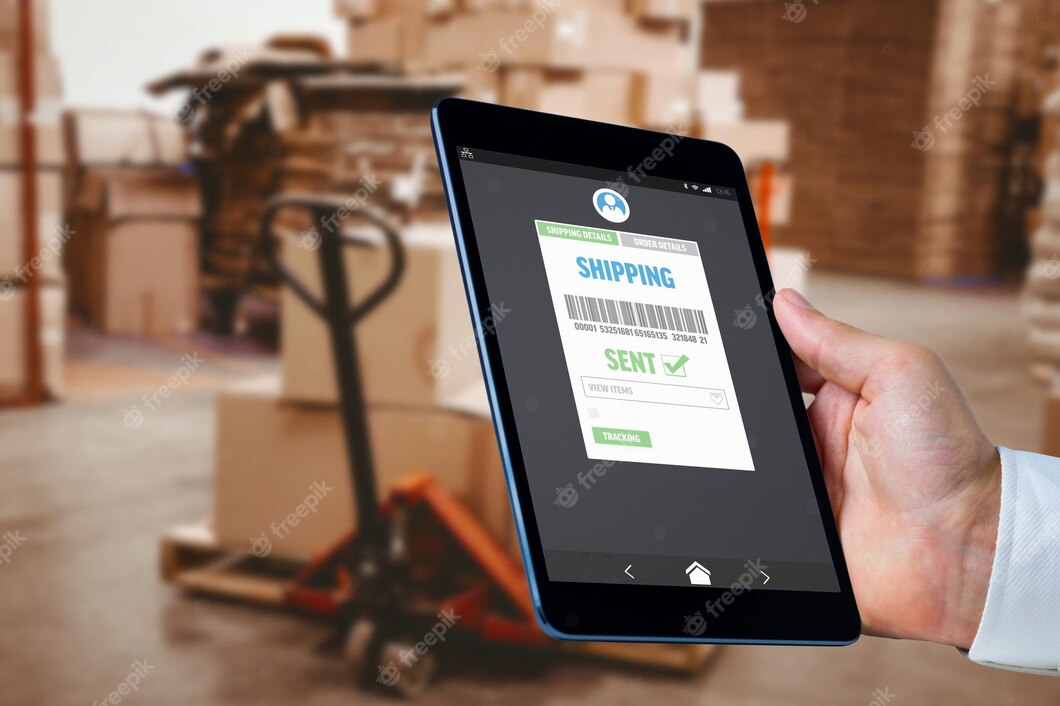
Dropshipping is a retail fulfillment method where a store doesn't keep the products it sells in stock. Instead, when a store sells a product, it purchases the item from a third-party supplier and has it shipped directly to the customer. As a result, the merchant never sees or handles the product.
The advantage of dropshipping is that it eliminates the need for the merchant to manage inventory or handle shipping. This can make it an attractive option for those looking to start an online business without a lot of upfront costs or inventory management. Dropshipping can also allow for a wider range of products to be offered, as the merchant can source products from multiple suppliers.
However, dropshipping does have its challenges. Because the merchant does not handle the products, they have less control over the quality of the products, shipping times, and customer experience. Additionally, dropshipping can be highly competitive, with many other online retailers offering the same products.
To be successful in dropshipping, it is important to thoroughly research and understand the market, suppliers, and product offerings. The merchant should also focus on providing a high-quality customer experience and building a strong brand reputation.
dropshippingStarting a dropshipping business can be an exciting and lucrative venture. It allows you to sell products without the hassle of managing inventory or shipping logistics. Here are some tips for starting a successful dropshipping business:
Choose a niche: Decide on a specific product category or niche that you want to sell in. This will help you focus your efforts and make it easier to target your ideal customers.
Research suppliers: Look for reliable suppliers with high-quality products and good shipping times. You can use platforms like AliExpress, SaleHoo, or Worldwide Brands to find suppliers.
Set up an e-commerce website: You'll need a website to showcase your products and allow customers to place orders. Platforms like Shopify, WooCommerce, or BigCommerce make it easy to set up an online store.
Optimize your website: Make sure your website is easy to navigate, mobile-friendly, and optimized for search engines. Use high-quality product photos and descriptions to entice customers to make a purchase.
Market your business: Use social media, email marketing, and other tactics to drive traffic to your website and attract customers. Consider offering promotions or discounts to first-time buyers.
Monitor and improve: Keep track of your sales and customer feedback to identify areas for improvement. Continually optimize your website and product offerings to maximize your profits and customer satisfaction.
Starting a dropshipping business requires effort and dedication, but with the right approach, it can be a profitable and rewarding venture.
Amazon automation refers to the use of software or tools that automate various tasks on the Amazon platform. This can include everything from product research and listing creation to order fulfillment and customer service.
One of the most popular uses of Amazon automation is in the area of product research. With so many products available on the platform, it can be overwhelming for sellers to identify the right products to sell. Amazon automation tools can help sellers analyze sales data, product reviews, and other metrics to identify products with high demand and low competition.
Another area where Amazon automation can be helpful is in the creation of product listings. Rather than manually creating listings for each product, sellers can use automation tools to generate listings quickly and efficiently. These tools can help sellers optimize their listings for search engine optimization (SEO) and ensure that their products appear higher in search results.
Amazon automation can also be used to manage orders and handle fulfillment. With the help of automation tools, sellers can receive notifications of new orders and automatically process them for shipping. This can save sellers time and reduce the risk of errors in the fulfillment process.


Dropshipping wholesalers are companies that provide products to drop shippers, who then sell those products to customers without holding inventory. Dropshipping has become a popular way for entrepreneurs to start an online business, as it requires minimal upfront investment and eliminates the need for storing and handling inventory.
Dropshipping wholesalers offer a wide range of products, from clothing and accessories to electronics and home goods. These wholesalers source products from manufacturers or other suppliers and then provide them to drop shippers at wholesale prices. Dropshippers can then list these products on their own online store or marketplace and sell them to customers at a markup, earning a profit without ever touching the product.
One of the main advantages of working with drop shipping wholesalers is that it allows entrepreneurs to start a business without the need for large amounts of capital or storage space. Dropshippers can start selling products immediately and focus on marketing and customer acquisition rather than worrying about inventory management.
Dropshipping wholesalers also offer benefits such as access to a wide variety of products, competitive pricing, and the ability to scale quickly as a business grows. Some dropshipping wholesalers also offer additional services such as product sourcing and branding, which can help drop shippers differentiate themselves in a crowded market.
When selecting a dropshipping wholesaler, it's important to consider factors such as product quality, shipping times, and customer support. Dropshippers should also consider the pricing and payment terms offered by the wholesaler, as well as any fees or minimum order requirements.
Dropshipping is a business model that allows entrepreneurs to sell products online without the need to hold inventory. Instead, drop shippers work with suppliers who fulfill orders directly to customers on behalf of the seller. Dropshipping has become a popular way for beginners to start an online business, as it requires minimal upfront investment and eliminates the need for storing and handling inventory.
To get started with dropshipping, beginners should first identify a niche or market that they are interested in. This could be anything from beauty products to electronics or home goods. Once a niche has been identified, it's important to research suppliers and products that will appeal to customers in that market.
One of the most important aspects of successful dropshipping is selecting the right suppliers. Beginners should look for suppliers who offer high-quality products, competitive pricing, and reliable shipping times. It's also important to consider the supplier's reputation and customer support, as these factors can have a significant impact on the success of the business.
After selecting suppliers, beginners should set up an online store or marketplace to sell their products. This can be done through platforms such as Shopify or WooCommerce, which offer easy-to-use tools for building and managing an online store. It's important to optimize the store for search engine optimization (SEO) and user experience, in order to attract and retain customers.
Once the store is set up, drop shippers can start marketing their products through social media, email marketing, and other channels. It's important to have a clear value proposition and communicate this to potential customers in order to stand out in a crowded market.
As orders come in, drop shippers should work closely with their suppliers to ensure that orders are fulfilled and shipped to customers in a timely manner. Communication and transparency are key in building a strong relationship with suppliers and providing a positive customer experience.


An Amazon automation store is an online store that uses automated tools and software to manage various aspects of the business. With the help of automation, sellers can streamline their operations, save time, and maximize profits on the Amazon platform.
One of the key benefits of an Amazon automation store is the ability to automate tasks such as product research, listing creation, and order fulfillment. By using automated tools, sellers can quickly identify products with high demand and low competition, create optimized product listings, and fulfill orders efficiently.
Another advantage of an Amazon automation store is the ability to scale the business quickly. With automation tools handling many of the day-to-day tasks, sellers can focus on growing their business through marketing, product development, and customer acquisition.
One popular tool for Amazon automation stores is the use of chatbots for customer service. Chatbots can handle common customer inquiries and provide quick and accurate responses, improving the customer experience and reducing the workload for sellers.
Another area where automation can be helpful is in managing inventory. By using tools that monitor sales and stock levels, sellers can ensure that they always have the right amount of inventory on hand to fulfill orders, without overstocking or running out of stock.
An Amazon automation store can also benefit from using analytics tools to monitor sales performance and identify opportunities for growth. By analyzing data such as sales trends, customer behavior, and marketing ROI, sellers can make data-driven decisions that improve the profitability of the business.
Starting an Amazon store can be a great way to start an online business and reach millions of customers around the world. Here are the basic steps to get started:
Create an Amazon seller account: The first step in starting an Amazon store is to create an Amazon seller account. This can be done by visiting the Amazon Seller Central website and following the instructions to sign up.
Choose your products: Once you have an Amazon seller account, you can start thinking about what products you want to sell. You can choose to sell products you make yourself, or you can source products from wholesalers or manufacturers.
Research your competition: Before you start selling, it's important to research your competition and find out what products they are selling and at what price. This can help you identify gaps in the market and find ways to differentiate yourself from competitors.
Create your product listings: Once you have identified your products, it's time to create your product listings. This involves writing product descriptions, taking product photos, and setting prices. You should optimize your listings for search engine optimization (SEO) to improve visibility on the platform.
Fulfill orders: When a customer places an order, you need to fulfill the order by packaging and shipping the product to the customer. You can do this yourself or use Amazon's fulfillment service, which handles the shipping and customer service for you.
Promote your products: To drive sales and attract customers, you need to promote your products. This can be done through Amazon's advertising platform or through other marketing channels such as social media or email marketing.
Monitor and optimize: To succeed on Amazon, it's important to constantly monitor your sales performance and make adjustments as needed. This includes adjusting prices, improving product listings, and optimizing your advertising campaigns.
